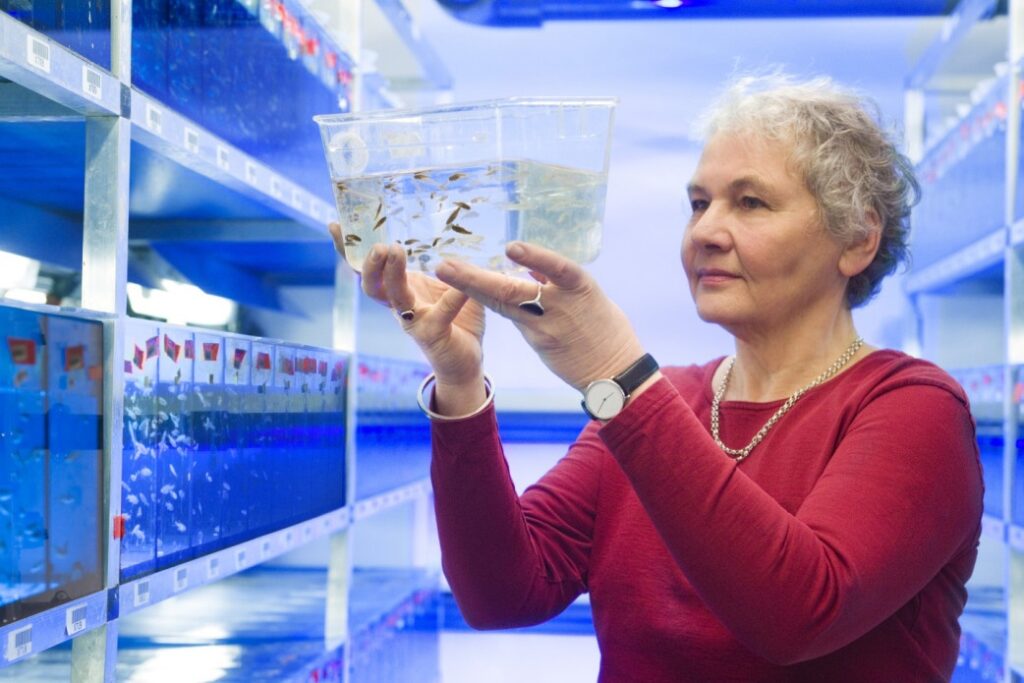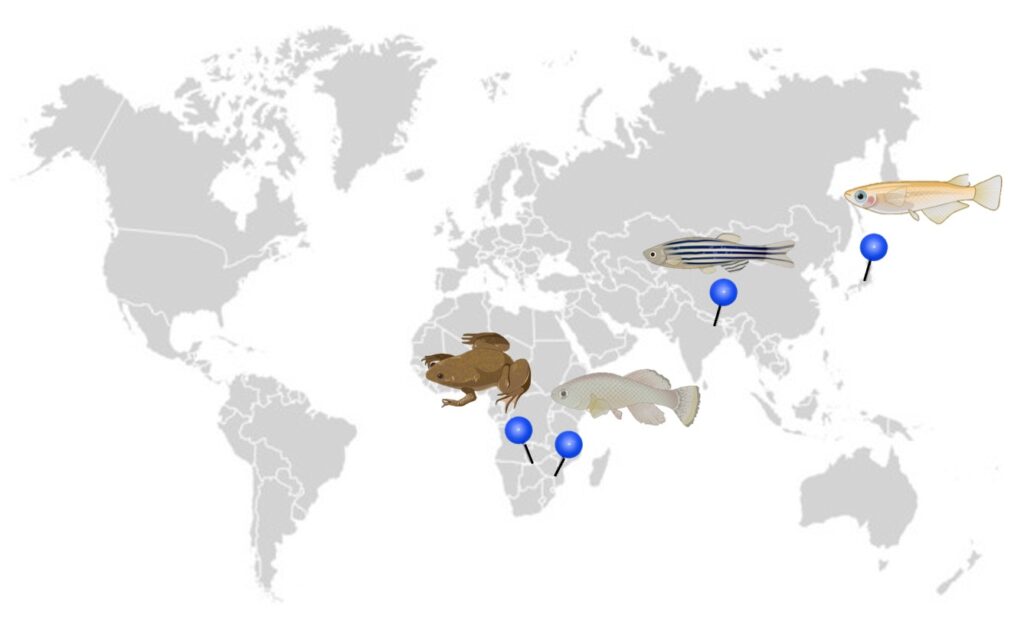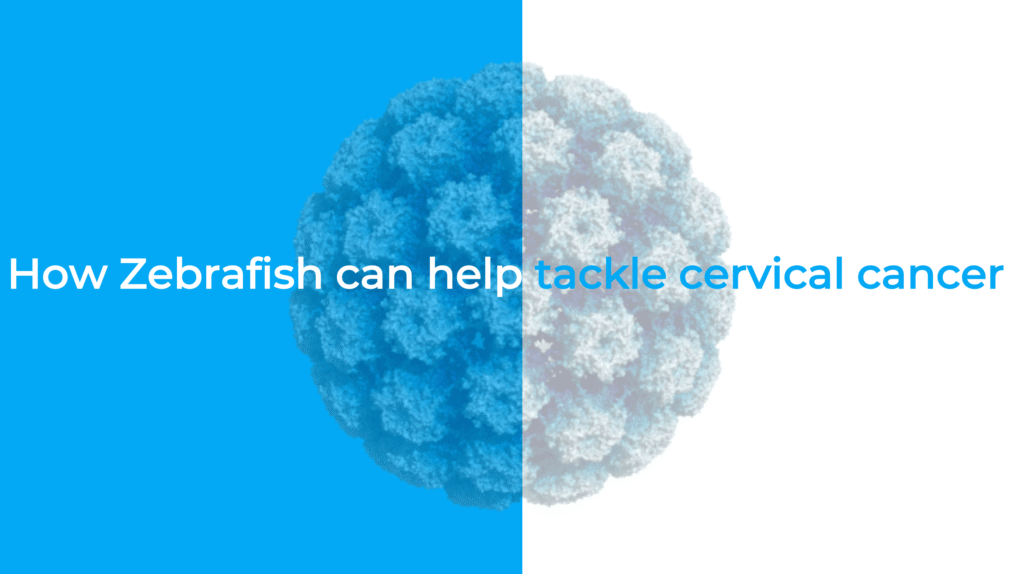First in the series : Prof. Christiane Nüsslein-Volhard

In March we celebrate women’s history. And we have taken this great celebration to highlight important women in the history of aquatic models research, especially zebrafish and xenopus. Every Friday of this month, we will publish one article on the fantastic discoveries made by a woman. Today we are honored to present to you Prof. […]
Do zebrafish fall in love?

Valentine’s Day just passed and zebrafish show us their dance again. In fact, male zebrafish have a special way to seduce females: they court females by dancing! By being an emergent model in biology and medicine, zebrafish are more and more studied and used. But do we really know about their social behavior? This article […]
Xenopus laevis chromosomes in the Christmas spirit

Christmas is coming and even the African clawed frog (Xenopus laevis) cells are in the Christmas spirit. In fact their cells contain a structure that looks like Christmas trees. But what is this particular structure? They are rRNA transcription units in chromatin spreads. And what does this mean? Keep reading to understand it! In this […]
Where do our aquatic models come from ?

Did you know that the EggSorter works with small biological entities from different species: from zebrafish, medaka and killifish eggs to xenopus oocytes and embryos? Sounds cool, right? But do you know where these species exactly come from and what they are used for in research? This article presents the ecology of these organisms and […]
Do zebrafish like classical music ?

In laboratories and fish facilities, environmental noise management is essential to ensure the well-being of zebrafish and optimize their reproduction. Noises from the aquarium facility, as well as from human activities, can influence zebrafish behavior. In this article, we talk about how fish react to environmental sounds and how music, especially classical music can positively […]
How can zebrafish embryos help to find a personalized treatment for leukemia?

September is blood cancer awareness month. Leukemia is the broad term for blood cancer, and just in Switzerland, there are more than 1000 new cases listed per year. It is also the most common childhood cancer (1). The diversity of leukemia and the ineffectiveness of current treatments call for new treatments tailored to each individual, […]
Using zebrafish for water quality control

Water pollution is evolving into a serious human and environmental health problem. Numerous pollutants can be found in waters, including synthetic compounds, chemicals naturally present in the environment and endocrine disruptors. To ensure good water quality and safe consumption, drinking water must be certified free of these toxins. An effective and accurate quality control system […]
Women’s contribution to zebrafish science

February 11th marked the 7th International Day of Women and Girls in Science. The purpose of this day is to recognise the role of women in science and to promote full and equal access to science to all women and girls who wish to participate and take part in leading actions and innovations around the […]
How zebrafish can help tackle cervical cancer

Cervical cancer is the fourth most common malignancy diagnosed in women and causes 270’000 deaths every year1. In 2008, the Nobel Prize of medicine was awarded to Dr. Herald zur Hausan – a German virologist and medical doctor – for his work and discoveries on HPV causing cervical cancer2. His discoveries led to a worldwide […]
Introducing Xenopus!

Over the past couple of weeks, you might have encountered men of all ages, proudly wearing a freshly grown moustache. During the month of November, many men take part in Movember, an annual event which involves growing a moustache to raise awareness around men’s health and in particular men’s mental health and prostate and testicular […]